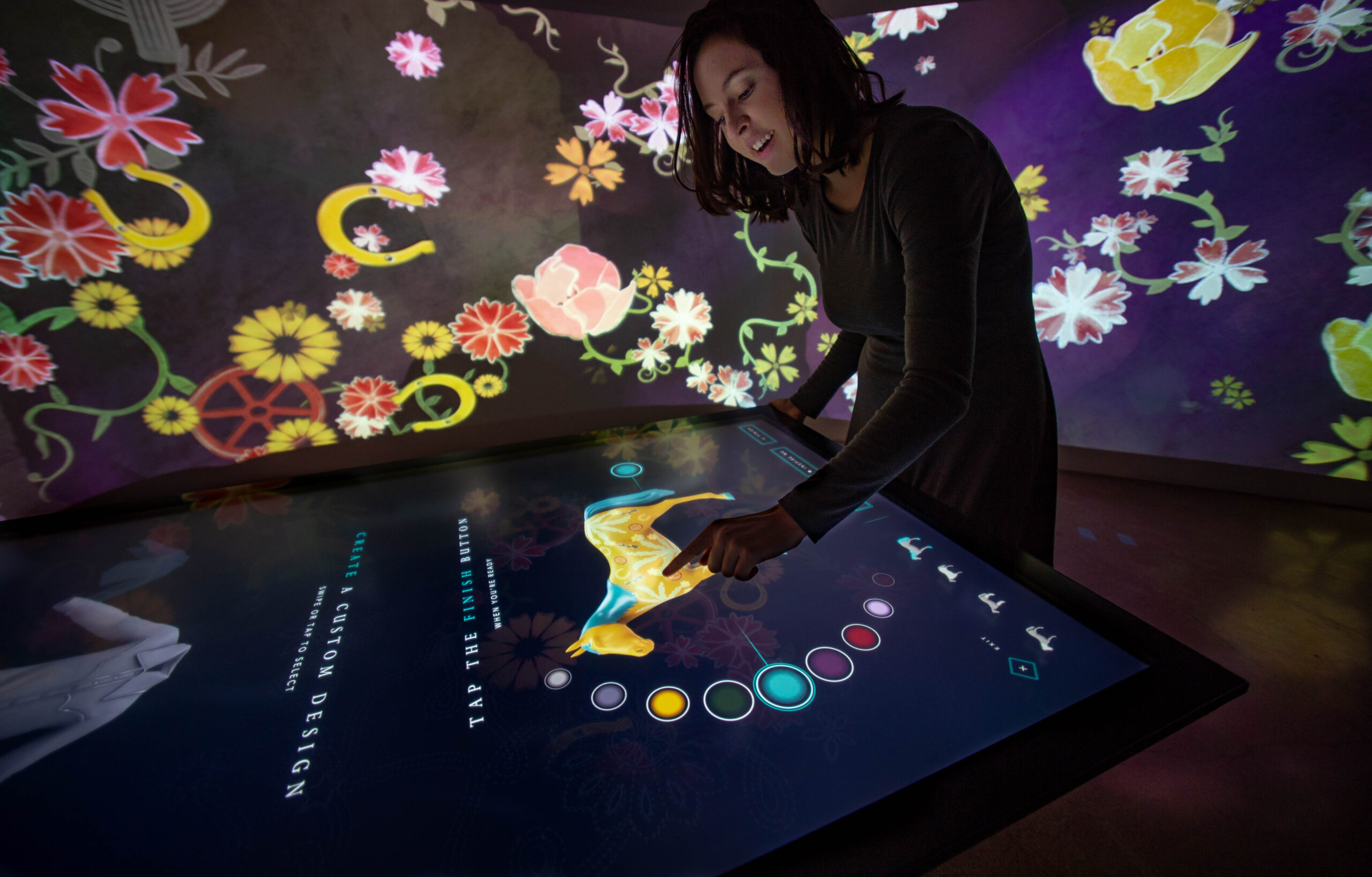
As part of the museum’s second floor refresh, the Western Design Room invites visitors to immerse themselves into the colorful designs and artifacts inspired by the American West. As guests use a custom Unity application on an Ideum 65″ multitouch table to select patterns and textures from the Museum’s collection, those choices are reflected on the walls through illustrated representations constantly growing and evolving.
| Clients | : | National Cowgirl Museum |
| Location | : | Fort Worth, Tx |
| Date | : | March 2019 |
| Team | : | Ideum |
| Role | : | Creative Technologist |
| Tech | : | Projection Mapping, Pandoras Box, Unity |




The Prompt
The project began with a collaborative brainstorming session to determine what type of objects should be in the exhibit, and to what extent visitors would be able to customize their experience. Cowgirl boots, western shirts, and painted horse statues were eventually selected as the objects, and Ideum created 3D models of each to create the most visually compelling experience possible.
Ideum collaborated with the Museum to select items from their collections of western boots and shirts. Selections were made based on the stories behind the artifacts, the uniqueness of the design, and the overall cohesiveness the design could have within the full experience. Final design selections include pieces worn by Cowgirl Honorees like Fern Sawyer, Tad Lucas, and Connie Douglas Reeves.
Although each boot and shirt from the Museum’s collections has a unique style and design, western wear as a whole represents the spirit and scenery of the American West. The imagery of cacti, stars, horses, and flowers come together to paint a beautiful scene, and elements such as fringe and embroidery nod to the heritage of American Indian elements found in western wear throughout the years.
Because the designs selected represent a wide range of western fashion and time periods, Ideum designers digitized the artifact selections by meticulously illustrating all of the selected designs and processing them into 3D textures and stylized projection displays.
Ideum created lifelike textures using Substance Designer, which were then imported as textures into Unity, where the application was authored. Great care was taken to achieve nearly lifelike renders on the 3D objects.
As visitors go through their selections, stylized designs change on the projection walls to reflect the visitor’s choices. A system was developed to translate user selections into a digital tapestry that utilizes different design elements and colors.

In order to develop the concept and technical workflow, we first fabricated a mockup space in Ideum’s exhibit fabrication studio representing the exact specifications of the final installation. Working within the size and shape constraints of the room, Christie’s Ultra Short Throw Laser Projectors were called upon to maximize the size of the projection area. Utilizing a Coolux Pandoras Box media server, we warped and distributed the single video feed to the three projectors to create the consistent display across.

The Process


